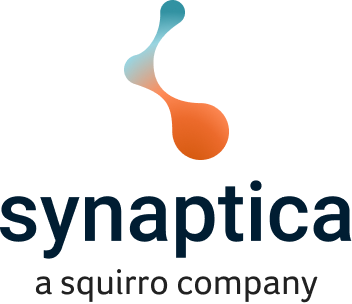Joyce van Aalten is an independent taxonomy consultant and trainer. She has 15+ years’ experience with taxonomy, thesaurus, ontology and knowledge graph projects for a broad range of customers. For this Insight Interview with the Synaptica team, Joyce talks about her experiences as an independent consultant and explains her concept of minimal viable taxonomies.
Tell us about you? What led you to taxonomies?
JVA: I live in the Netherlands, married with two kids, 14 and 11 years old. My head, my thought process is around how you structure things. I love language. I love semantics and the meaning of words.
My children and my childhood have definitely influenced the way I work today. As a child I created my own library. All my books had a mark at the top, a number, and a small removable card inside the cover. Today, I enjoy teaching my children how a language is structured, what are synonyms, what are antonyms. If you combine these parts, you get a taxonomy.

”My head, my thought process is around how you structure things. I love language. I love semantics and the meaning of words.
I started my career in library science studying in the Netherlands. After I graduated, I worked a couple of years as an information specialist and desk researcher. Weaving information was part of my job. This evolved into facilitating and finding information. I thought how interesting it would be to give advice on findability. My first experiences of taxonomy were about findability. These are the examples that I use now when I talk about taxonomy projects.
Later, I joined a consultancy agency in the Netherlands. That was my first real first experience as a consultant with a special interest in information management, but also working with taxonomies. Subsequently the consultancy focus changed towards the IT sector, but I wanted to stay with the taxonomy part. I decided to work as an independent consultant and created Invenier. This was about 14 years ago.
You have been a solopreneur for almost 15 years. What’s it like running an independent consultancy?
JVA: It’s fun and I get to work “my way.” Independence gives me the freedom to work on the projects I enjoy and develop the methods to deliver them. There is variety to the work I undertake; nothing is routine, and I enjoy embracing change.
I often work on several different assignments at the same time. Often, I’m juggling between different projects. They can get mixed up, overlap, but this can be a good thing. Added value comes from the experience of diverse work, different organizations working with a variety of tools and domains. Mixing and blending the experience of multiple projects. You might be using a client’s content management system, which could be great for another project.
I’ll say my work never stops. I often get my best ideas when I’m doing practical things, folding the laundry or taking a walk.
Tell us a bit about the type of projects you work on.
JVA: My projects often vary in range and size. A small project might involve an organization already using a thesaurus or taxonomy. They need confirmation and an expert review. Are we doing the right things; are we on the right track? I might be asked to review the viability of taxonomies.
This can grow into workshops or training. Students come in, and I teach them how do you create that taxonomy? This can be a challenge with limited time.
Larger scale projects tend to take longer. For example, working with content strategists to create a taxonomy. They may require migration from one content management system to another, which requires preparing the content before it can be absorbed. Enterprises often have ambitious aims, for example: omnichannel strategies. The taxonomy has to be part of this.
Creating a taxonomy that aligns to these approaches needs to involve input from members of the content team. I team up with content owners and managers because they have insight into what content goes into the system, what needs to be excluded, and what you focus on. They might be involved with tagging. It’s important to keep them involved throughout, and make sure they are supported.
It can take time as there are all the different processes to consider; cleaning the content; preparing for migration and implementing the taxonomy content management. This is where taxonomy tooling can come in and make a difference especially with multiple content management systems.
Has the kind of projects you work on changed over time?
JVA: It has and it hasn’t. The basics remain the same; they haven’t changed that much. We are back to my children’s library – we still need to label, to categorize. In these terms, projects remain the same.
There are changes and progression in the sense of new technologies: the impact of AI, taxonomies in relation to LLMs. What hasn’t shifted is we are working with legacy systems, content divided into several content repositories. In addition, we are working with people who are not always quick to adapt; there can be reluctance. Other factors that haven’t changed relate to tight budgets, or limited processes or structures.
That’s why my answer is yes, there is drastic technological change but some things remain the same: the people and the process.
What do you enjoy most about your project work? Is there an element that you really relish?
JVA: Definitely the creation of the taxonomy. During this part of the process, I can dig deep into the content and switch on my taxonomist nerd mode. It’s a bit like entering a small room, closing the curtains and concentrating hard.
The other part I enjoy is the collaboration with others. One of my goals is always to enthuse others about taxonomies. I want people to enjoy the work and get more out of it. It’s important to be an advocate, an ambassador for the practice.
Are there any particular challenges that you often solve?
JVA: There are common traits like solving findability and retrieving content. Working with taxonomies is a bit like working under the hood of a car. Taxonomies are like the engine in a car, hidden and not visible. When you start driving you don’t always think about the complexity underneath. You just want to drive.
”Working with taxonomies is a bit like working under the hood of a car. Taxonomies are like the engine in a car, hidden and not visible. When you start driving you don't always think about the complexity underneath. You just want to drive.
Where do you start with a taxonomy project?
JVA: Sometimes clients have a sense they need a taxonomy, but they are not sure where to start. Can it work for them? The first step with most projects is to begin with a content audit. You look at files, what’s being shared, folders, the structure of the content. Look at the different systems involved, the document management system or other content repositories. But you have to set limits with this process, otherwise you really can get stuck down a rabbit hole. There needs to be scope and set dates. I recently discussed this issue and the idea of using a minimal viable taxonomy (MVT) at Taxonomy Boot Camp.
Developing a perfect, precise, but large enterprise taxonomy can be a challenge. Starting with a minimal viable taxonomy is good for an organization that isn’t sure what or how the taxonomy can be leveraged. They have to figure out how the taxonomy can work for them. Starting with a smaller scale version gives them a feeling for how it works, how to use it and how they can grow the taxonomy further.
With an MVT you scope the taxonomy to the content of one content repository in which the taxonomy will be implemented. This MVT will be stored in a spreadsheet and in the content repository it is used for. The MVT should have hierarchical relationships and synonyms. These can be expanded with associative and other semantical relationships when the MVT grows towards a full taxonomy.
What would you look for in a taxonomy tool?
JVA: Ease of use. I am used to working with all kinds of taxonomy tools but in working with people who are not taxonomists at heart, I have seen that useability is important. Taxonomies often start in a spreadsheet or perhaps a mind map. Tools can offer functionality for supporting workflows, creating the structures, storing audit trails, and allowing for migration. These are things that can’t be done in a spreadsheet. You can’t collaborate with multiple users tracking what’s going on, how it’s being used.
Do you notice any difference in the ways taxonomies are used in Europe versus the US or elsewhere?
JVA: Most of my project work is based in Europe but in recent years I have been working at an international level. Overall, they are the same despite various locations – the approach or the technology remain the same. It’s only the language that is different. Different or multiple languages might result in a different development approach, however.
What makes a good taxonomist?
JVA: For me, it’s not the skills or competencies as much as you may think. Your educational background can be any subject, any field, but it’s the mindset that to most. The desire for structure. You can study library science but it doesn’t need to be a prerequisite to be become a good taxonomist. Taxonomists like organization, structure, and have a natural instinct towards being tidy.
What general advice would you give to someone developing a taxonomy?
JVA: Organizational needs can be different from one organization to another. Try to find the biggest pain point but be prepared to start small. It needs to be feasible – something that can be easily developed or implemented. Usually, when working on a new project, or a new content system, my first thoughts are to find a problem, develop the solution, and show the value.
”When working on a new project, or a new content system, my first thoughts are to find a problem, develop the solution, and show the value.
Why do organizations need taxonomies?
JVA: Taxonomies and ontologies can be leveraged in so many ways. You can enrich your search, utilize the use of content, and develop reasoning. You can do so many things. Organizations generally see the immediate value for taxonomies when they improve retrieval. They help you find your content. The taxonomy becomes the glue between all the content and data. If you have a tin can without a label, you don’t know what’s inside. You will need to open the can to see the content. Taxonomy and metadata are important today because machines don’t understand what’s inside, and we still need to tell them what the content is.
Synaptica Insights is our popular series of use cases sharing stories, news, and learning from our customers, partners, influencers, and colleagues. You can review the full list of Insight interviews online.




